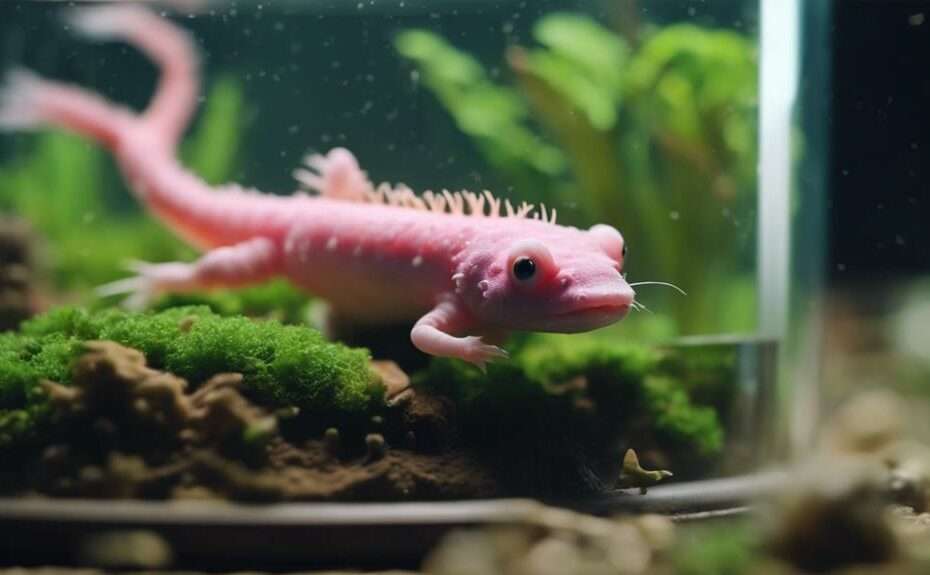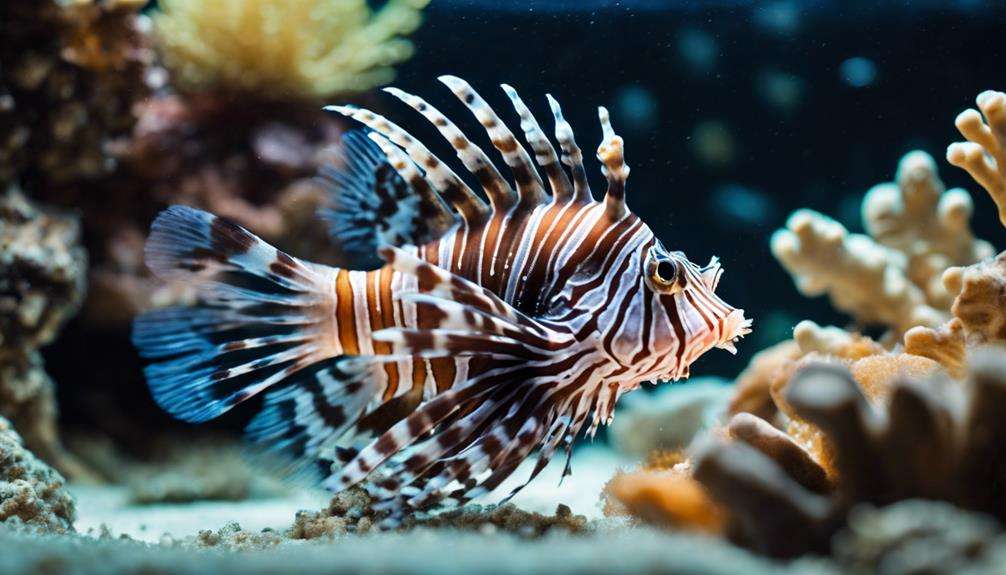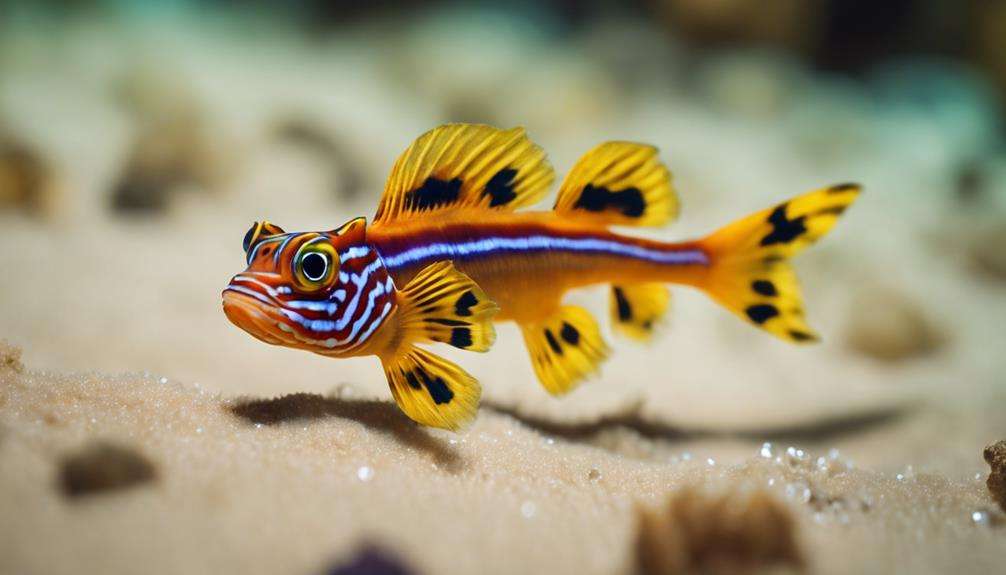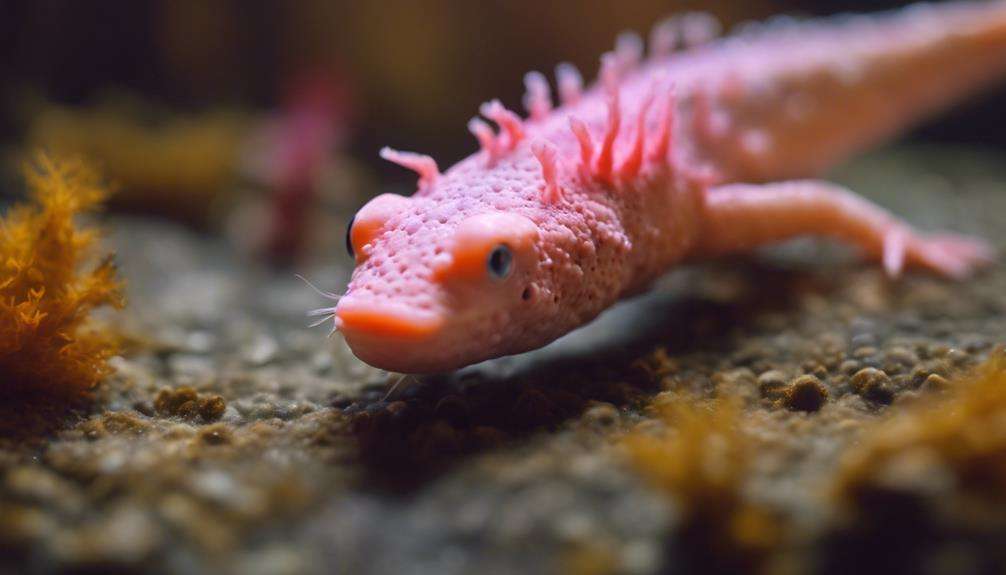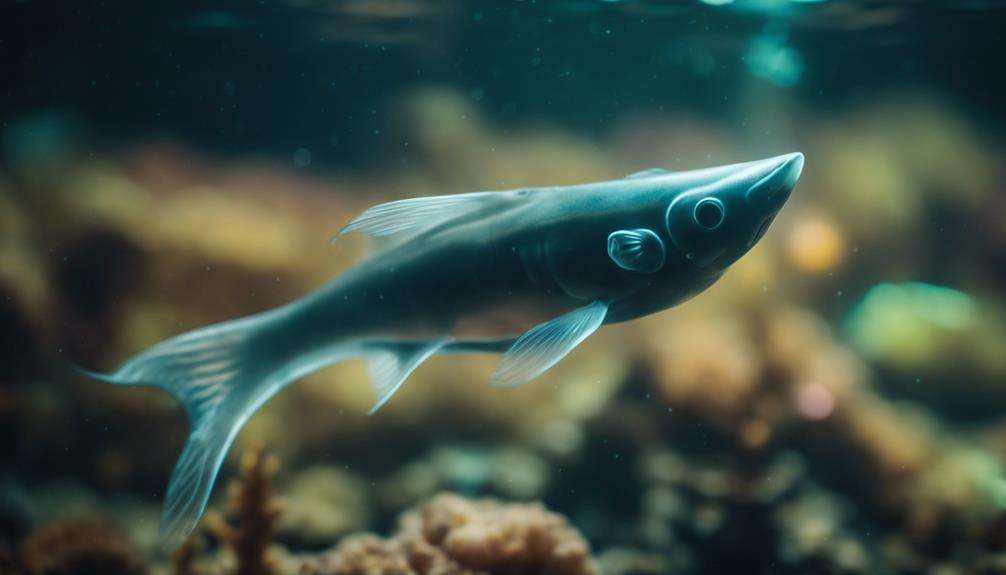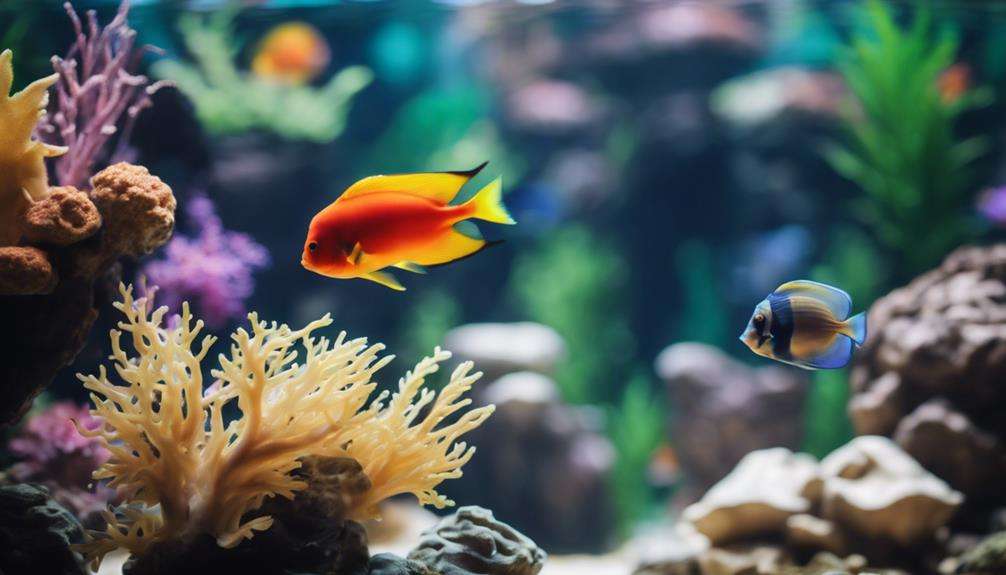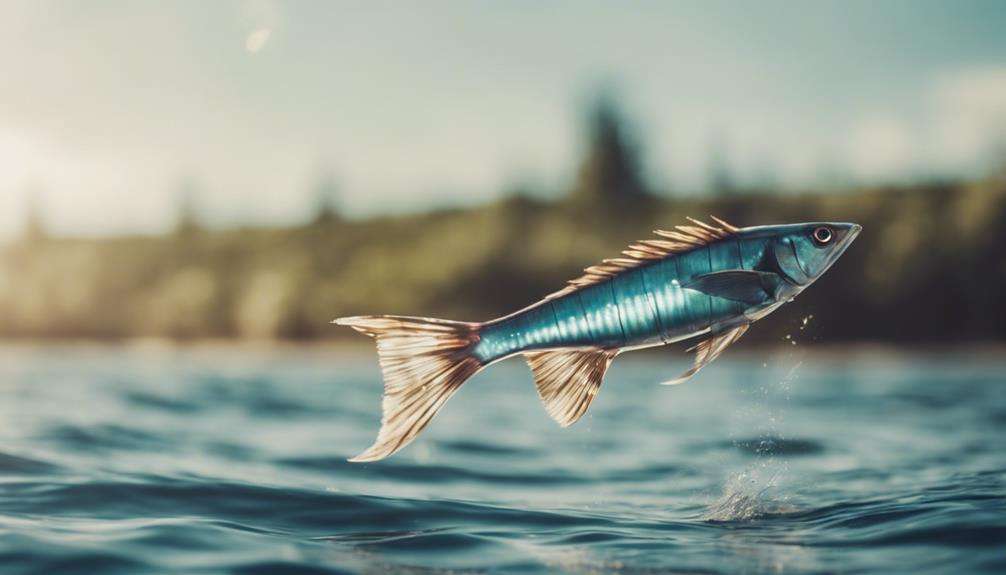Are you struggling to breed axolotls successfully? Implementing expert tips can make a significant difference in your breeding endeavors.
From identifying females capable of laying eggs unassisted to preventing cannibalism among larvae, these strategies are crucial for ensuring a smooth breeding process.
By following these expert tips, you can increase your chances of successfully breeding axolotls and witnessing the beauty of new life in your aquatic habitat.
Key Takeaways
- Select healthy, mature axolotls for breeding success.
- Maintain optimal tank conditions for breeding behavior.
- Monitor water quality and temperature diligently.
- Implement proper feeding strategies for reproductive health.
Selecting Healthy Breeding Axolotls
When selecting axolotls for breeding, ensure they're mature, healthy, and exhibit optimal size and weight for successful reproduction. Mature axolotls, at least 18 months old, are more likely to produce viable offspring. It's crucial to assess the health of both male and female axolotls before breeding to prevent the transmission of diseases to the offspring. Checking for optimal size and weight is key, as it indicates the readiness of axolotls for breeding and their capacity to carry out the reproductive process successfully.
Breeding axolotls that show signs of illness or stress should be avoided, as these conditions can lead to unsuccessful reproduction and unhealthy offspring. Selecting axolotls with compatible genetics is vital for producing robust and genetically diverse offspring. By carefully choosing breeding pairs with complementary genetic traits, you increase the chances of having a successful breeding process and yielding healthy axolotl offspring. Remember, the quality of the breeding axolotls directly impacts the health and vitality of the future generation.
Providing Optimal Breeding Tank Conditions
To optimize the breeding success of axolotls, maintaining the water temperature between 16-18°C (60-65°F) is crucial. Axolotls are sensitive to temperature changes, and keeping it within this range simulates their natural habitat, signaling the right conditions for breeding.
Providing adequate hiding spots in the breeding tank is essential to reduce stress and encourage breeding behavior. These spots offer security and privacy, creating a conducive environment for courtship and mating rituals.
Water quality is paramount for successful breeding; monitor levels of ammonia and nitrite regularly and perform water changes as needed to maintain pristine conditions.
To enhance the breeding environment further, incorporate plants and rough stones in the tank to mimic their natural habitats. By creating a space that mirrors their native surroundings, you can stimulate natural behaviors and increase the likelihood of successful breeding.
Pay close attention to courtship behaviors like circling, nudging, and tail-wagging, as these indicate readiness for breeding. By carefully managing these breeding tank conditions, you can set the stage for a successful axolotl breeding experience.
Monitoring Water Quality and Temperature
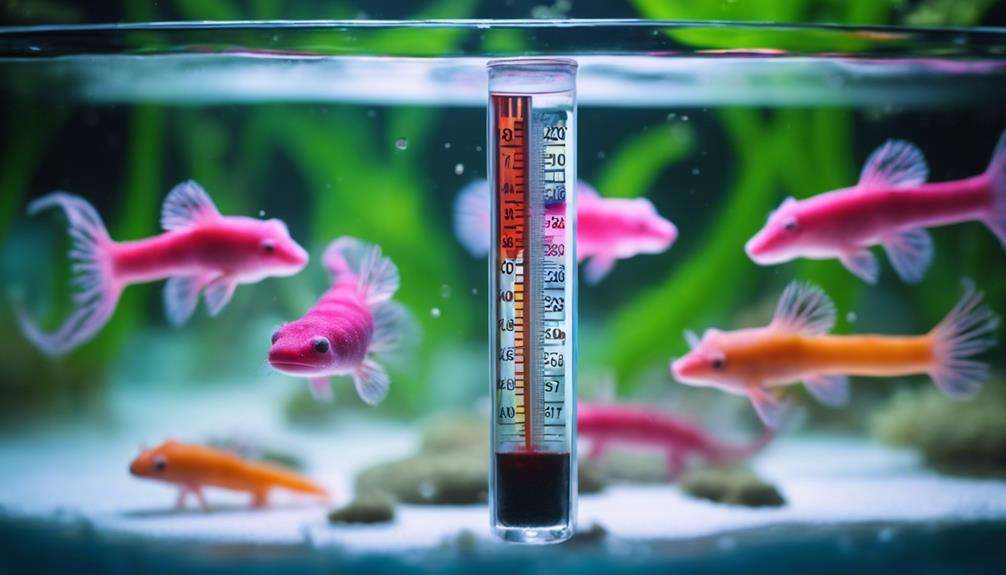
Maintaining optimal water quality and temperature is a critical aspect of successful axolotl breeding, ensuring that the conditions are conducive for reproductive behaviors and healthy offspring development. To achieve this, follow these key steps:
- Maintain water quality: Keep pH levels between 6.5 and 8.0 to create ideal breeding conditions.
- Monitor water temperature: Consistently check and maintain temperatures at 16-18°C (60-64°F) using a reliable thermometer.
- Test water parameters: Regularly assess levels of ammonia, nitrite, and nitrate to prevent stress on breeding axolotls.
- Ensure cleanliness: Keep the water clean and well oxygenated to support healthy egg development and breeding behavior.
- Stability is key: Ensure water temperature stability throughout the breeding process to support successful breeding outcomes.
Implementing Feeding Strategies for Breeding
Implement a strategic feeding regimen to maximize breeding success and ensure optimal nutrition for your axolotls during the breeding process. Transition your breeding axolotls from earthworms to nutrient-dense pellets to provide them with essential nutrients.
Consider adding live blackworms to their diet as a source of protein to prevent cannibalism and maintain their health. Establishing a blackworm colony can offer a sustainable food source for your breeding axolotls.
It's crucial to choose reputable brine shrimp brands to supplement their diet with vital nutrients. Adhering to proper feeding practices is essential to prevent post-feeding fasting and support your axolotls' overall health and reproductive success.
Managing Courtship and Spawning Behaviors
When observing courtship and spawning behaviors in axolotls, certain distinct movements and postures signal the initiation of the spawning process. Courtship behaviors play a crucial role in the successful reproduction of axolotls. Here's what you need to know:
- Male axolotls deposit spermatophores, containing sperm for fertilization.
- Females lay individual eggs after fertilization, usually attaching them to plants or other surfaces.
- The eggs typically take around 2 to 3 weeks to hatch, with optimal development occurring when attached to plants.
After spawning, it's essential to remove both the female and male axolotls from the breeding tank to prevent stress or aggression. Proper management of courtship and spawning behaviors is vital for the successful breeding of axolotls. By understanding these processes and taking necessary precautions, you can enhance the chances of a successful breeding outcome.
Frequently Asked Questions
How Do You Trigger Axolotl Breeding?
To trigger axolotl breeding, adjust water temperature and mimic natural habitat conditions. Ensure proper tank setup, consistent feeding schedule, and ideal water quality. Select compatible mates, observe mating rituals, nest building, egg laying, and parental care.
What Are the Breeding Habits of an Axolotl?
Breeding axolotls display intricate mating rituals, including courtship behaviors and nest building. Their reproductive cycle involves fertilization, egg laying, and parental care. Hatching time marks the start of larval development, crucial for breeding success.
Are Axolotls Hard to Breed?
Breeding axolotls can pose challenges due to specific requirements for successful mating. Factors like reproductive readiness, genetic diversity, mating behavior, and hormonal changes play crucial roles. Ensuring optimal tank setup, water conditions, and attentive egg care are essential.
How Do You Breed a Golden Axolotl?
To breed a golden axolotl successfully, focus on golden axolotl care, breeding tank setup, axolotl genetics, water quality, golden axolotl diet, breeding season, axolotl color variations, breeding behavior, golden axolotl offspring, and breeding success tips.
Conclusion
In conclusion, successful axolotl breeding requires careful attention to detail and adherence to expert tips.
By selecting healthy breeding axolotls, providing optimal tank conditions, monitoring water quality and temperature, implementing feeding strategies, and managing courtship behaviors, you can increase your chances of breeding success.
But the question remains, are you ready to embark on this rewarding journey of breeding these fascinating creatures?
